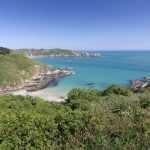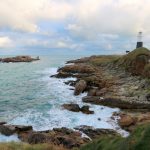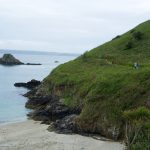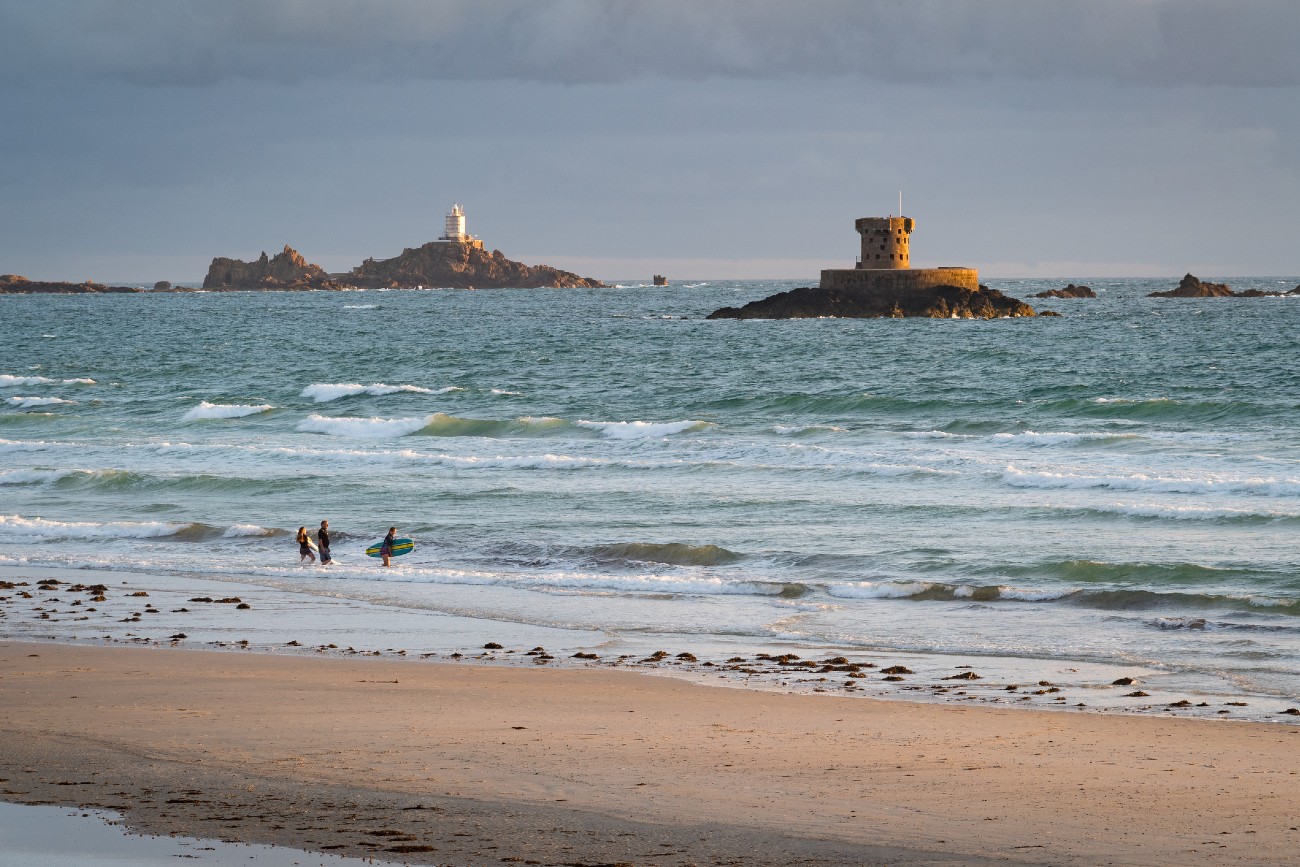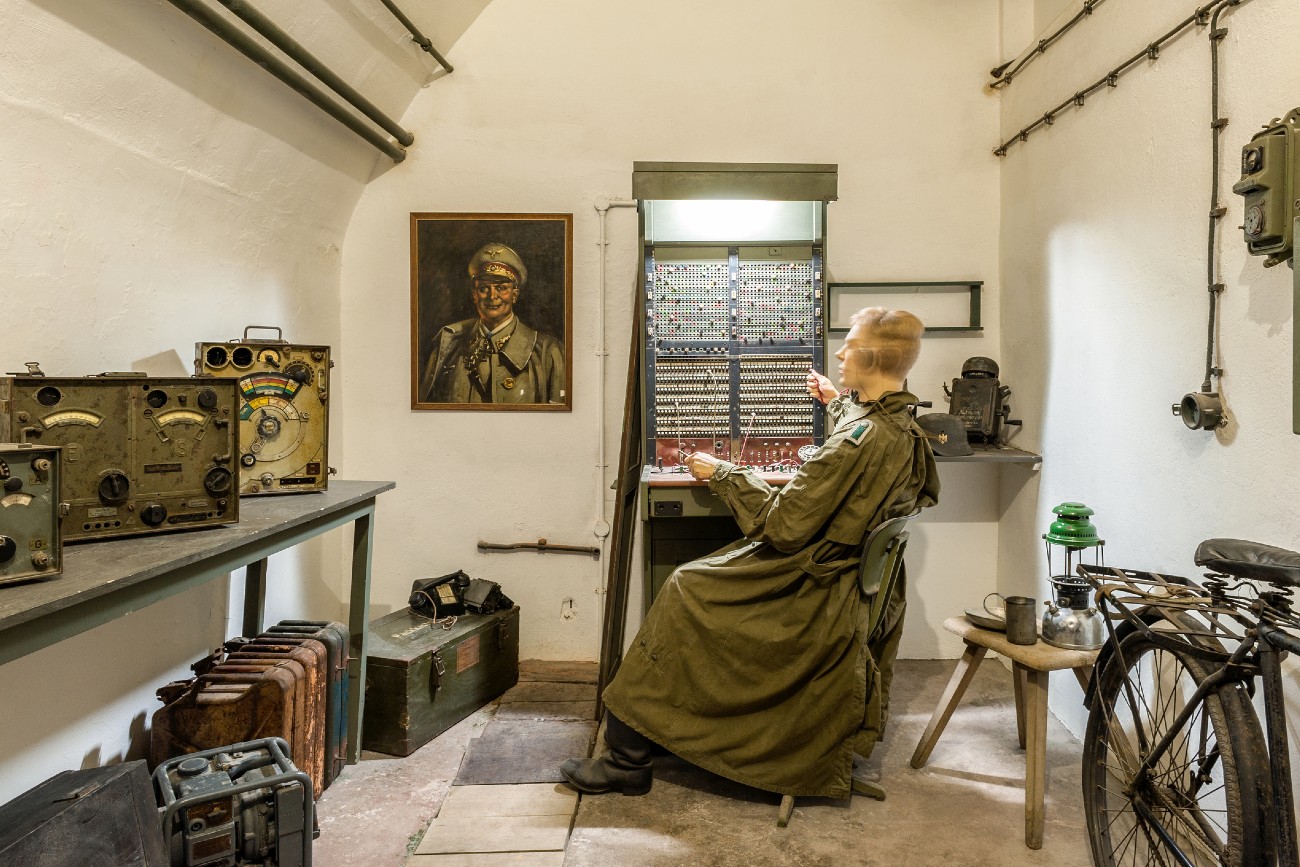
The Channel Islands welcome tourists year round with mild winters and warm summers. Guernsey, Jersey, Alderney, Herm, Sark, Jethou and Brecqhou are the habited islands, but there are many smaller inhabited islands, as well.
Ranging from 0.3 km2 to 118 km2, the islands are generally small, but the largest, Jersey, holds as many as 106,000 residents. With their size and smaller population, especially in the 1940’s, it may come as a shock for many to learn that Hitler’s forces invaded the Channel Islands during World War II.
This article will look into what happened on the Channel Islands, what made them a target for Nazi Germany, as well as life for the residents during German occupation.
Channel Islands: Life Before WW II
As it is today, the Channel Islands were popular destination spots for tourists before World War II, as well. Known for horticulture and tourism, the Channel Islands attracted visitors, even after the start of World War II, as people longed to escape the threat of invasions.
The UK government relaxed travel to the various islands to encourage people to “get away” and still contribute financially to the islands. Because the Channel Islands relied so heavily on tourism, the wellbeing of the inhabitants was dependent on the economics of travellers.
The tourism continued even after the UK declared war on Germany in 1939. It wasn’t until mass evacuations from the Channel Islands after the Allies lost the Battle of France, that life on the islands started to change.
Evacuations from the Channel Islands
The UK Government considered the stakes of leaving troops in the Channel Islands after the loss in France and decided that military forces would be better allocated elsewhere. Upon this realisation, it was decided that the Channel Islands would be demilitarised.
This demilitarisation left the populations of the islands vulnerable, and mass evacuations were organised. Jersey, Guernsey, and Alderney were the three largest to evacuate, with women and children, and school-aged children with mother volunteers. These children were sent to England, Scotland and Wales.
Due to the swift and unprepared nature of the evacuations, there was chaos and confusion, leaving many residents stuck on the islands. Also, many residents decided to stay for personal reasons, or from propaganda – encouraging them to stay.
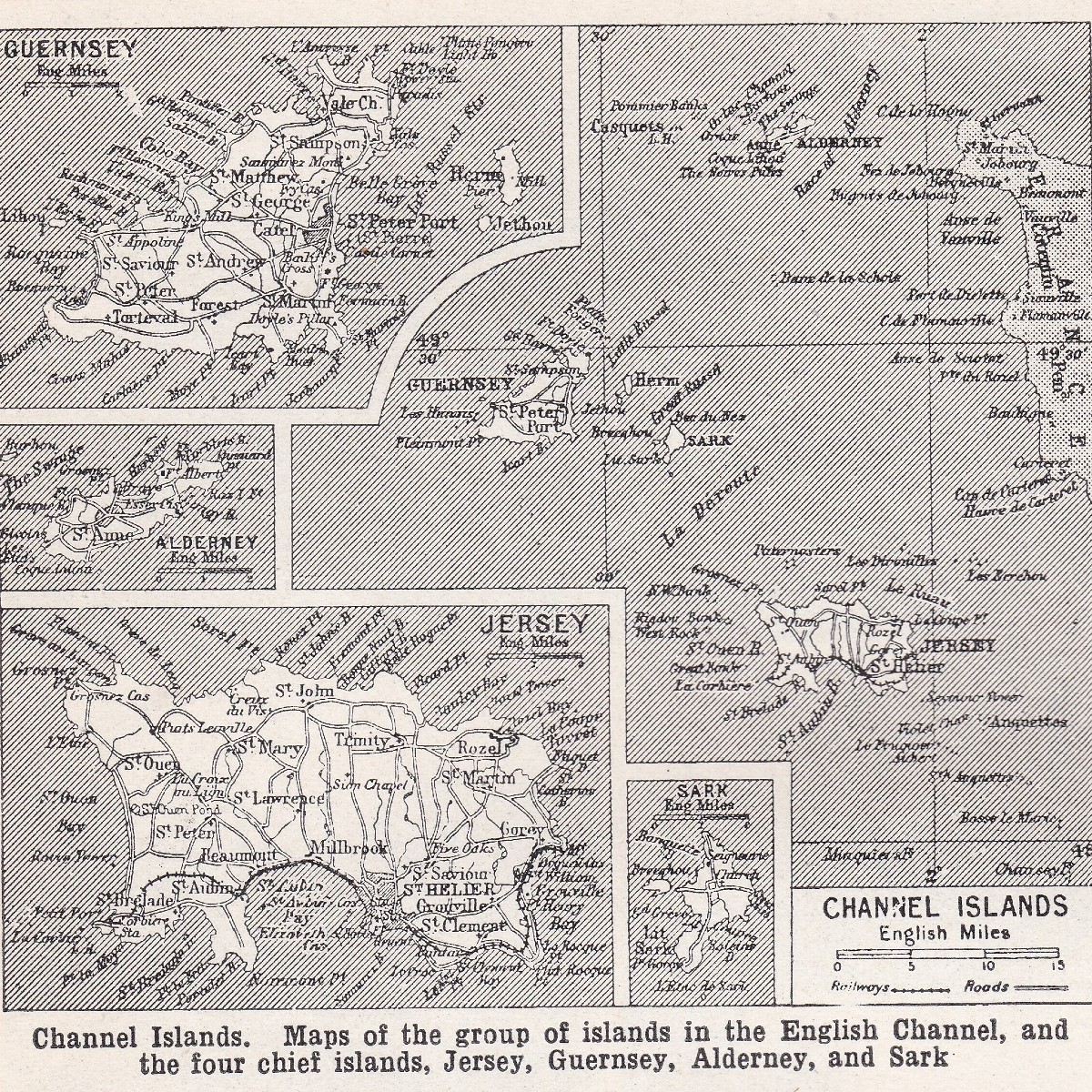
Maps of the Channel Islands
Hitler Invades the Channel Islands
After the win in France, Hitler decided to aim his focus onto UK territory. Because of the proximity to the coast of France and high from a victory over British forces, Hitler’s soldiers headed towards the Channel Islands. Planting the Nazi Germany flag on British soil was his next conquest.
Without knowing that the islands had been demilitarised, the Germans bombed the harbour of St Peter Port on June 28, 1940, and attacked transport trucks carrying goods, mistakenly assuming the trucks were carrying soldiers. It wasn’t until hearing a BBC broadcast that they realised the Channel Islands were open towns, with no military presence.
German troops took over Guernsey on June 30th, Jersey on July 1st, then followed by taking Alderney on July 2nd, Sark on July 4th. It was then that German occupation of the Channel Islands began.
Residential Life on the Channel Islands during German Occupation
The residents that stayed behind on the islands quickly found themselves overwhelmed by a major change in their lifestyle and the rules that governed them. Bailiffs and other government officials stayed behind to try to maintain order, however, German law quickly caused confusion.
Under German occupation, any German laws broken by Channel Island residents would be prosecuted in military court. The time zone was changed, as were rules of driving, and a different currency was issued. Many people lost their jobs, and businesses owned by Jewish residents were mandated to be surrendered.
There were many abrupt changes in the day-to-day lives of people living in the Channel Islands. With the earlier evacuations, many schools closed, and any children left behind began learning German.
Entertainment was still encouraged, albeit with the content approved by censors. Dances, movies, boxing matches, and sports all continued during the occupation, but there were now curfews, and separate areas for German soldiers to enjoy, their presence always known.
Fuel rations began as soon as the occupation started, and many cars were confiscated for use in the war efforts by Germans. Those used to getting around by vehicle were resigned to walking or cycling, if the bicycle was also not taken. Horse-drawn carriages came back as a mode of transport, as well.
Fuel for cooking was impacted, and coal eventually ran out. Cutting wood for fuel was restricted, also, and residents resigned to burning whatever furniture they had. A method called Haybox cooking was implemented, which resorted to heating a pot and placing it inside a box, with hay as insulation. Residents would also rely on local bakers, and share stoves communally.
Communications with the outside world was cut off early on, with no letters allowed to come in from outside of the islands. Radios were allowed intermittently but many times were confiscated, and many residents were without telephones.
Channel Island Deportations
Over the course of German occupation, upwards of 2300 residents were deported from the Channel Islands. While many were deported based on violations of German law, in 1942, Hitler demanded that officers who served in World War 1 be deported, as well as any individuals not born on the islands.
Many of those deported ended up in labour camps, with Jews sent to concentration camps. Even though only a relatively small population of the islands was deported, the stress of the situation and concern of being placed in a prison camp drove some residents to suicide.
Construction During WW II on Channel Islands
In June of 1941, Hitler decided to lean upon the Organisation Todt (OT), a corps of workers, to fortify the islands with stronger military defences. This included tens of thousands of men and women workers for over 200 projects.
Guest workers, military internees, and civilian workers were all part of the construction efforts, and there were a mix of forced and volunteer labourers. They weren’t just limited to residents on the island – many workers were prisoners taken during the war and shipped from France, Northern Africa, and Poland.
Guernsey, Jersey and Alderney received the most coastal fortifications. This included towers used to look out for invasions from the sea, casemates, bunkers and tunnels. As with many war construction projects, the tunnels proved to be dangerous work, killing some of the workers. Mines were also laid around the harbours as a line of defence.
Starvation on the Channel Islands
Even though the Channel Islands had resident gardens and cattle, they still relied very heavily on food imports. Initially, the idea of German soldiers replacing evacuees, would not have been much of an issue for the food supply. However, the reliance on imports proved to be a detriment as the war progressed.
Based on the Channel Islands location, the D-Day landings by Allied troops on Normandy beaches in June of 1944 cut off the food supply coming into the islands. As with most wartime occupancies, as the food on the islands dwindled, instead of being shared between residents and soldiers, favour was given to the latter.
Fishing, once an important industry to the island, had also dwindled, with fuel being in short supply and many boats having left at the start of the invasion. Although rationing of food had been initiated in 1940, many individuals began to starve after the summer of 1944.
Residents had resorted to using every spare piece of personal property for gardening and food production, including using front lawns, and storing livestock, such as chickens, inside of their homes. A black market had emerged for foodstuffs, and those in violation were heavily persecuted.
In November, the Bailiff at Guernsey sent a request for assistance, and laid out how dire the situation was for everyone involved. By the end of December, the British Red Cross sent a ship with approximately 120,000 parcels to aid the suffering islanders. The Vega delivered food, soap, and medical supplies, saving thousands of lives.
End of the War on the Channel Islands
News that the war had ended travelled from Winston Churchill on May 8th, 1945, after a cease fire had been ordered to make the transition safer. On May 9th, 1945, Allied ships arrived in the harbours at Guernsey and Jersey with British soldiers.
In the weeks that followed, ships dropping off supplies began taking German soldiers away, as they began an attempt to rebuild the islands to their former state. Weapons were collected and mines were cleared as evacuees began returning. German Prisoners of War were removed from camps previously erected at Alderney.
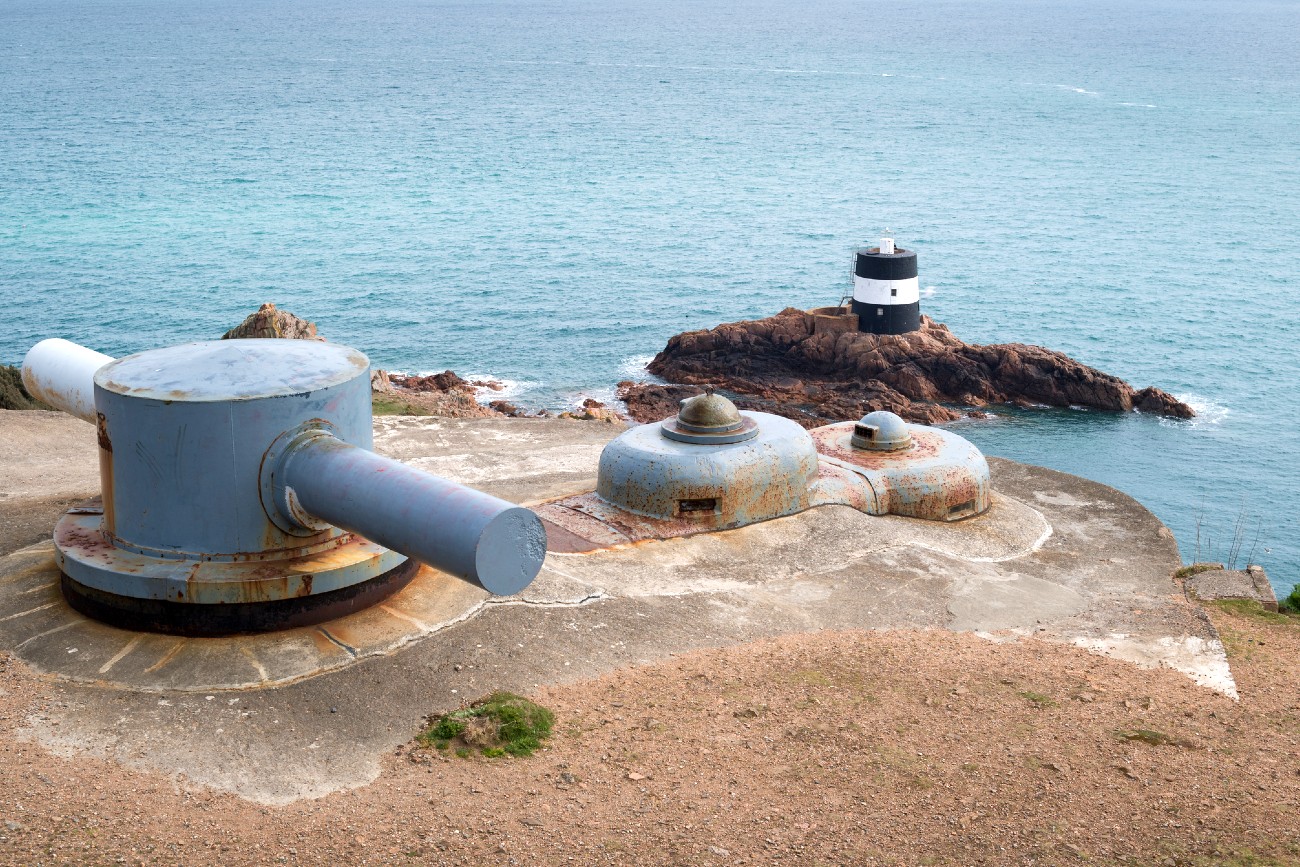
World War II – German coastal defences at Noirmont Point on the island of Jersey
Life After the War
For those on the outside, it is easy to assume that returning things back to the way they were would be a joyous occasion for everyone. While the German departure from the Channel Islands and the end of the war was a huge relief, life was still stressful for many residents involved.
Children that had departed five years earlier returned with a different understanding of life. In many cases, they had better experiences than the ones left behind, and to the dismay of their parents had a difficult time bonding over the years lost, or even communicating in their native tongue.
Local dialects were replaced with proper British English, and many families struggled to maintain the close relationships experienced before the war. Soldiers returned with common ailments of physical and mental issues, and starvation of those on the islands left many long-term effects, as well.
Trusting others in the community was difficult, as well, as people began pointing fingers at those who socialised with German soldiers or may have aided the German war efforts. Women who fraternised with soldiers were also looked down upon. The British Government led investigators into accused citizens on account of treason.
Land and houses were tended to with repairs and rebuilding, as citizens returned to start over, and many of them sought work and recovery in the place they once knew.
The Channel Islands incurred a great amount of debt from being mandated to support the German soldiers, but this debt was essentially paid or forgiven by the UK. Money was also supplied from the UK to help rebuild.
Relics of WW II on the Channel Islands Today
Relics of the German occupation still stand today in the Channel Islands and provide a stark reminder of the upheaval from World War II, with discoveries still being made as late as 2020. Tourism steeped in the love of military history still thrives, as many concrete towers and bunkers remain in good condition.
Just shy of the 75th anniversary of the Liberation, historian Dan Snow discovered a cache of artillery dumped at the bottom of a quarry, with many pieces believed to be in good condition.
Books and Films Regarding the Channel Islands During WW II
There are a host of non-fiction books, historical fiction novels, and films made regarding the impact World War II had on the Channel Islands.
Books:
- The German Occupation of the Channel Islands – Charles Cruickshank
- The Model Occupation: The Channel Islands Under German Rule, 1940-1945 – Madeleine Bunting
- Protest, Defiance, and Resistance in the Channel Islands: German Occupation, 1940-45 – Gilly Carr, Paul Sanders, et al
- Living With the Enemy, the German Occupation of the Channel Islands: The Story of the German Occupation of the British Channel Islands 1940-1945 with Eyewitness Accounts from Both Sides – Roy McLoughlin
- Life in Occupied Guernsey: The Diaries of Ruth Ozanne – 1940-1945 – Ruth Ozanne
- The Channel Islands at War: A Dark History – Robert Bard
- The Girl from the Channel Islands: A WWII Novel – Jenny Lecoat
- A Doctor’s Occupation: The dramatic true story of life in Nazi-occupied Jersey – Dr. John Lewis
- Jewels and Jackboots: Hitler’s British Isles, the German Occupation of the British Channel Islands 1940-1945 – John Nettles
- An Island at War – Deborah Carr
Films:
- Another Mother’s Son (2017)
- The Guernsey Literary and Potato Peel Pie Society (also a novel) (2018)
- Enemy at the Door (1980)
- Island at War (2004)
- The lslands of Guernsey – Secrets of Hitler’s Island Fortress (2019)
The impact of World War II on the Channel Islands cannot be forgotten for the affects still visible in the population, landscape and scenery. While few survivors still remain, families of those residents still remember and celebrate on Liberation Day what makes the Channel Islands so historic.
Learn more about these stunning islands in the following article: Exploring the Channel Islands


